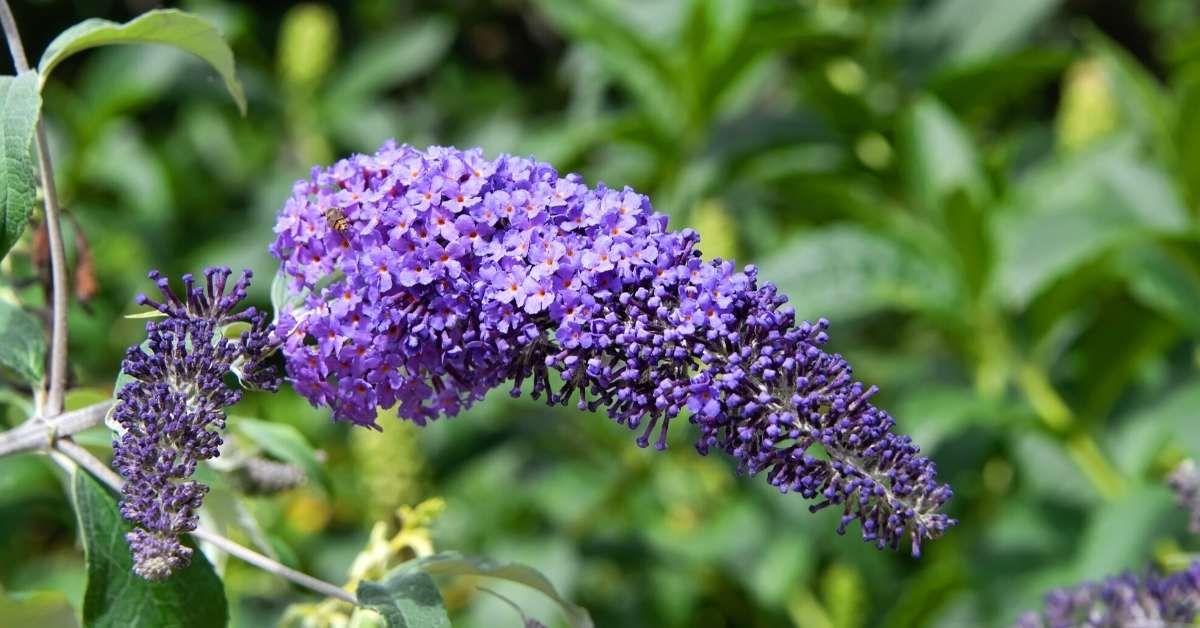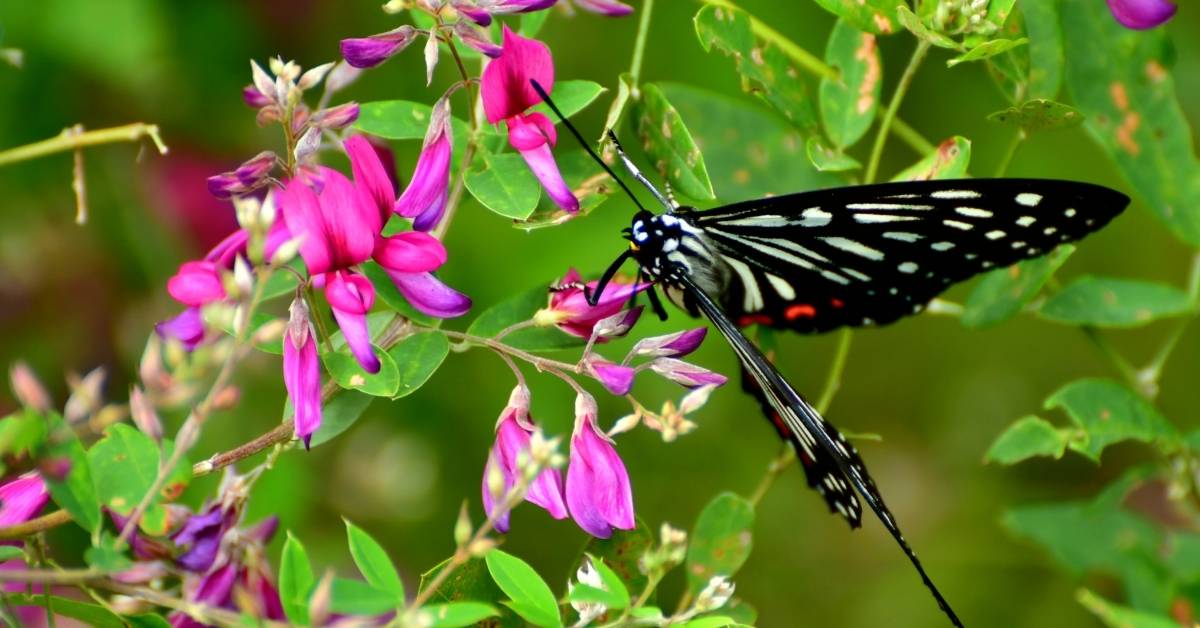A client gave me the mandate to enhance her flowerbed whenever I find a reliable perennial that blooms in purple. (This time it would be Vernonia Lettermannii)
To please her, I scour my suppliers’ catalogs every spring, looking for purple blooming plants.
Then I test grow them for a few seasons to determine how they perform. Most are disappointing. A few become messy or invasive. Some are short-lived plants lasting one or two seasons, while others cannot survive climate conditions in my growing zone.
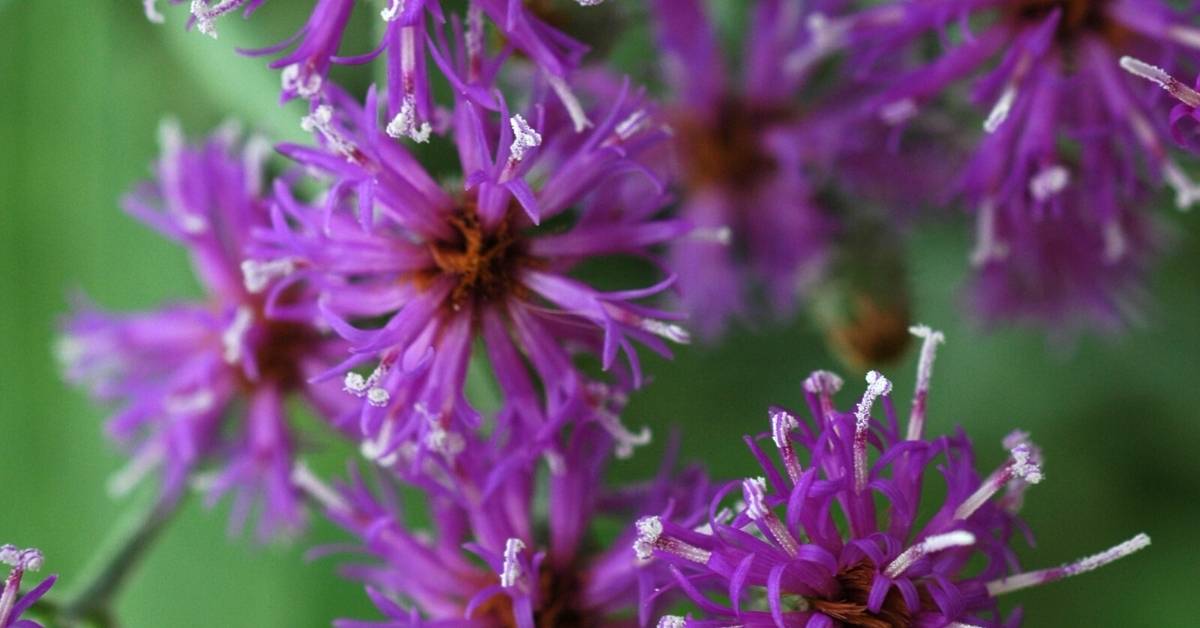
Vernonia Lettermannii
This year, I was delighted to learn that Vernonia lettermannii, commonly known as Narrow-leaf Ironweed, fits my stringent standards for neatness and little maintenance. This spring, I want to surprise my customer by planting it in her garden.
Despite being somewhat shorter than Vernonia arborescens and Vernonia mammoth, lettermannii has a far more vibrant color show than any of its larger siblings. It blooms in vivid genuine purple in August and September, projecting from afar and joyfully holding its color in the August sun.
Unlike its taller cousins, which fade and disappear as they mature, the florets of lettermannii retain their shape, and color (although slightly more reddish) even after dormancy has set in.
The flower heads may have long expired by October, but their rich color, now on slightly scrunchy petals, sustains itself for another few weeks.
Here are a few images of Vernonia lettermannii in one of my October flowerbeds taken this past season:
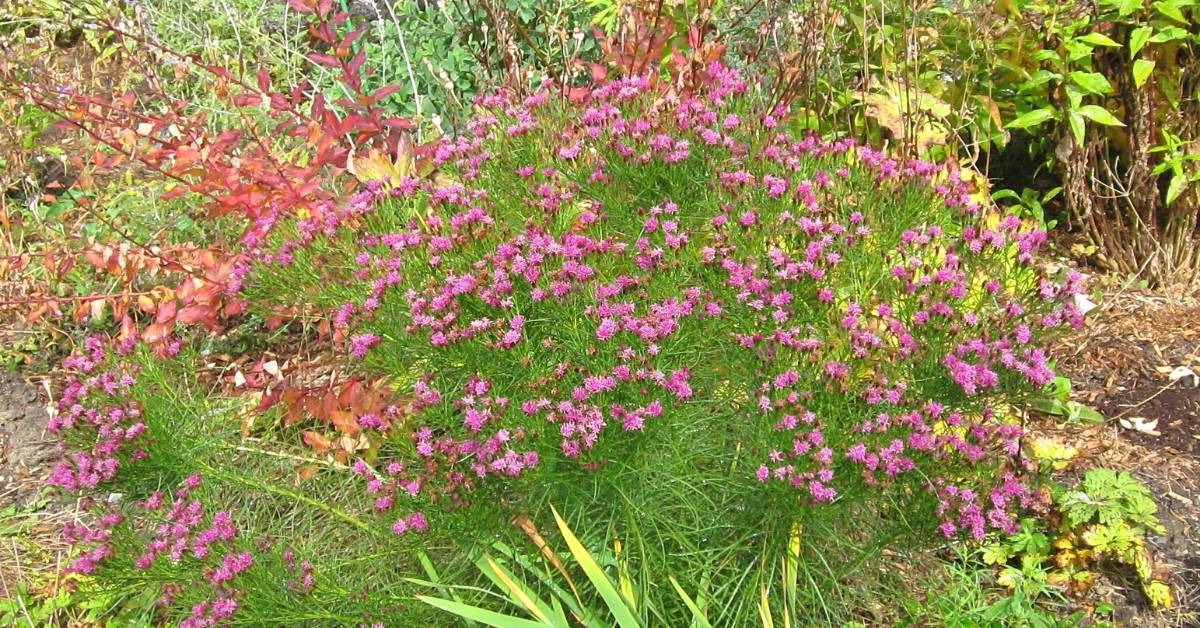
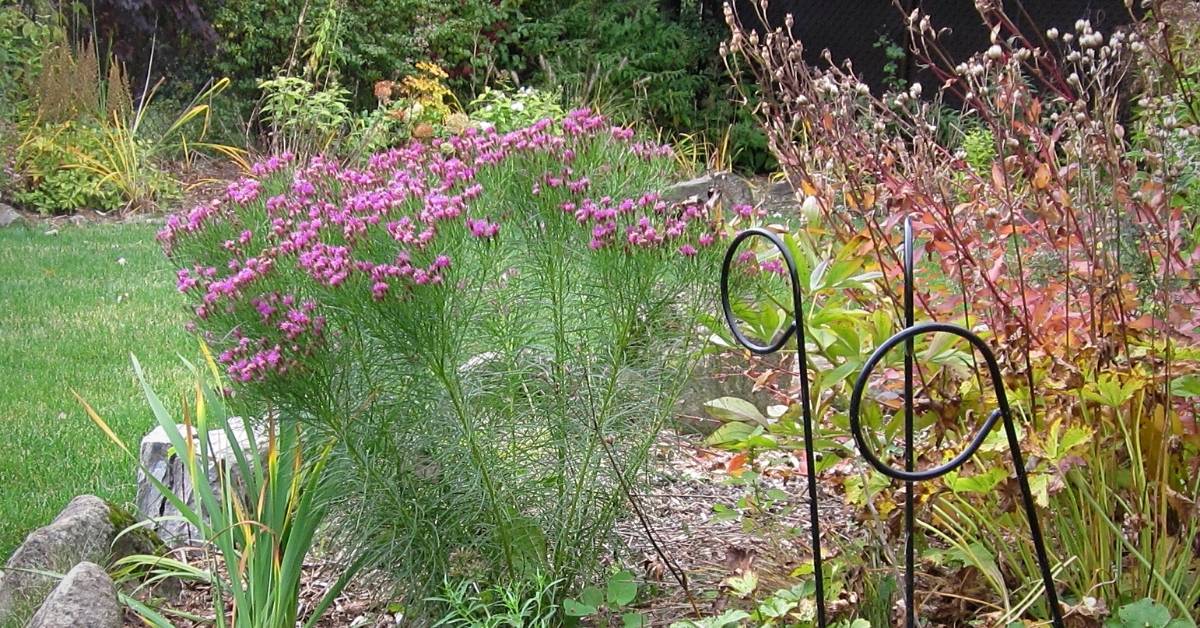
Vernonia lettermannii attracts butterflies
Vernonia lettermannii meets the demands of gardeners on various levels. It attracts butterflies and hummingbirds. It feeds a passion for purple flowers both when in bloom and into creeping dormancy, and it enriches the color story of the autumn garden by extending the bloom season well into October.
An additional attribute is its magnificent feathery foliage. The perennial sprouts up in late spring to form a huge, velvety mound of glossy-green leaves that is both beautiful to look at and wonderful to touch.
This aesthetic pleasure continues to offer a luxurious architectural feature to the landscape – imagine round but softer boxwood plants – and a feathery sensuality like Amsonia hubrechtii throughout the growing season.
Soil requirement
Cold hardy in USDA Zones 4 [CND Zone 5] Vernonia lettermannii is a heat-tolerant plant that grows two or three feet tall and wide in full sun, even in poor, rocky soil, under average to dry conditions. It is necessary to have good drainage. Periods of flooding are OK, but heavy or saturated soils are not.
Few if any retail nurseries stock Vernonia in any of its varieties. Consequently, all the varieties growing in my garden were purchased from mail-order suppliers.
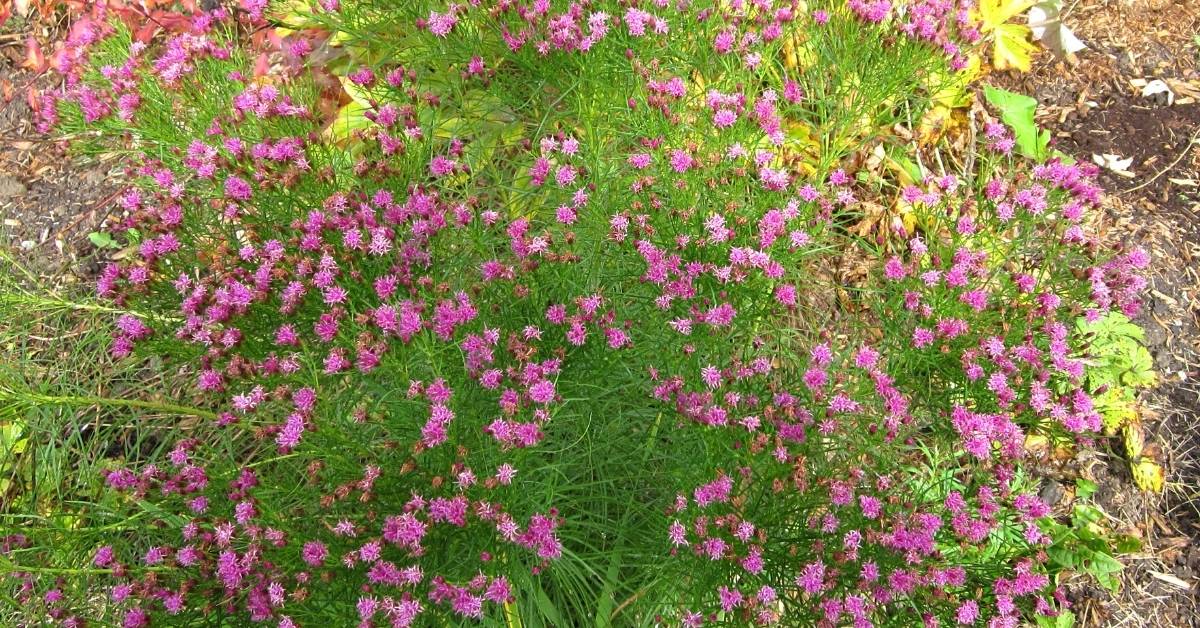
Here is the description of this flowering perennial:
Vernonia lettermannii is fascinating ironweed that hails from Arkansas and Oklahoma, where it can be found in rocky soils and on rock outcrops.
Imagine taking an Amsonia hubrichtii, shrinking it to 2′ tall x 2′ wide, shearing it into a round ball, then topping it with hundreds of purple flowers in August and early September, and you have Vernonia lettermannii…a hummingbird delight.
We grow this in our hot, dry, screen garden, where it has caused visitors to lust in their hearts.
Despite being significantly shorter than the species, the variation lettermannii creates a far more spectacular color show than any of its taller siblings. It keeps its color for longer than they do, even after they’ve gone dormant.
Vernonia lettermannii can brighten the heart and steal one’s breath away at this time of year, when the gardener is mournfully expecting the dropping leaves of autumn and when there is little or no color left in the fall flowerbed.
Ornamental Features
From mid to late summer, Narrowleaf Ironweed produces beautiful ray-like plumes of purple blooms with hot pink eyeballs at the ends of the stalks. Throughout the season, its beautiful thin leaves stay dark green in color. The fruit isn’t particularly attractive.
Landscape Attributes
The herbaceous perennial Narrowleaf Ironweed has a mounded appearance. It adds a delicate and subtle texture to the garden arrangement and should be exploited to its maximum potential.
This is a low-maintenance plant that should be pruned in late autumn to prepare for the winter. It’s a great way to attract bees, butterflies, and hummingbirds to your garden. It doesn’t have any substantial drawbacks.
The following landscape uses for Narrowleaf Ironweed are suggested:
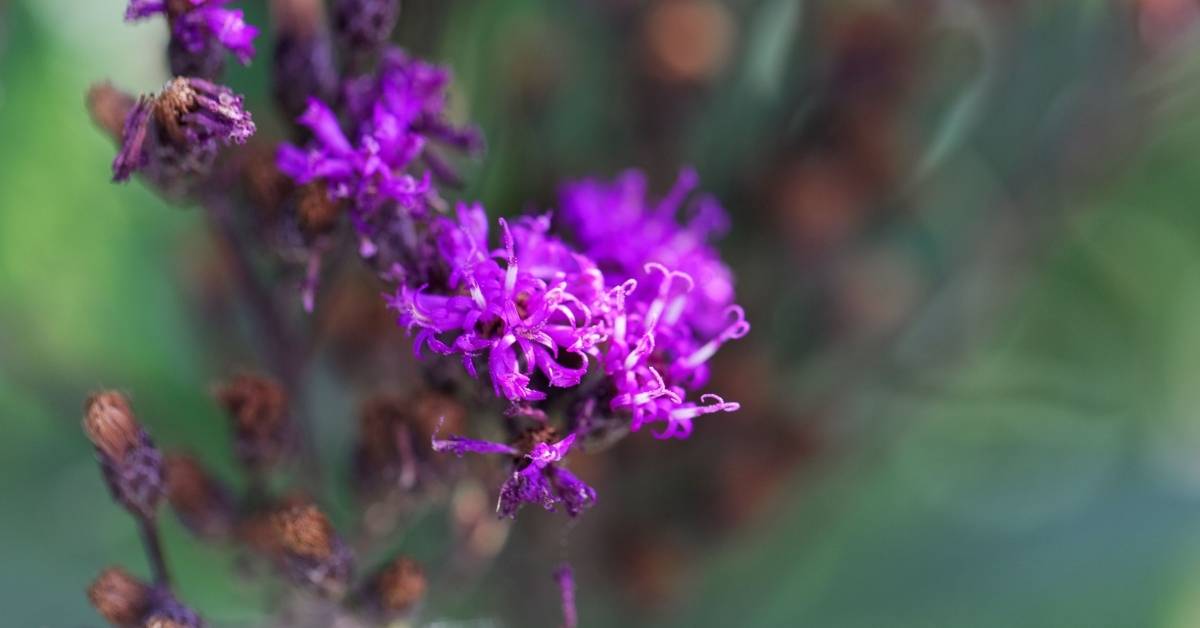
Container Planting Accent Mass Planting General Garden Use Planting & Growing
At maturity, Narrowleaf Ironweed will reach a height of 3 feet and a spread of 30 inches. Individual plants should be spaced around 24 inches apart, whether grown in bulk or as a bedding plant. Its foliage stays dense all the way to the ground, so it doesn’t need facer plants in front. It has a high growth rate and may expect to survive for around 10 years under optimum conditions.
The best growing conditions for Narrowleaf Ironweed
The optimum conditions for this plant are the full sun to moderate shade. It thrives on average to equally wet circumstances, but it will drown if exposed to standing water.
It doesn’t care about the soil type or pH. It is highly tolerant of urban pollutants and may even survive in densely populated areas. This species isn’t native to the United States. It can be passed on down the generations through division.
Narrowleaf Ironweed is a lovely addition to the yard, but it’s also an excellent choice for pots and containers. Due to its height is frequently employed as a ‘thriller’ in the ‘spiller-thriller-filler’ container combination. Plant it in the middle of the container, surrounded by smaller plants and those flowing over the sides.
It’s even big enough to be grown by itself in a proper container. It’s important to remember that plants grown in outdoor pots and baskets may demand more regular watering than plants grown in the yard or garden.
